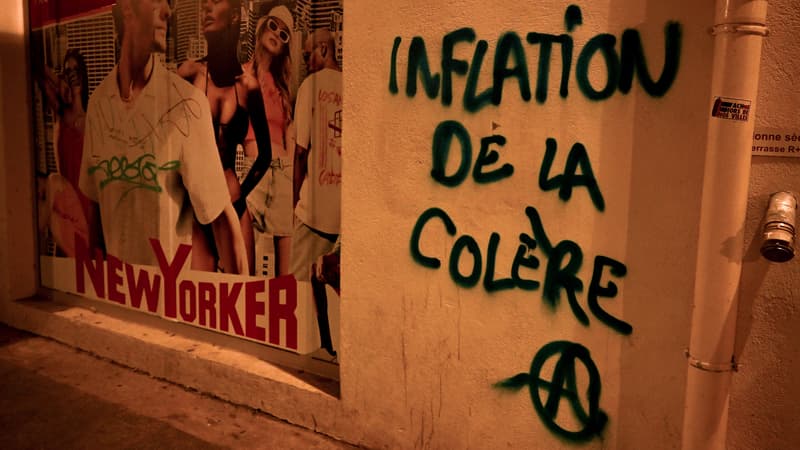How much do you estimate the increase in consumer prices in France in the last 12 months? If we ask this question to INSEE – which provides its consumer price index (CPI) every month – the answer will be 5.6% for the month of March that has just ended. The French interviewed by Odoxa, however, have a different perception.
According to a survey carried out for Agipi, Challenges and BFM Business and published this Thursday, the average response given is 18.1%, a difference of more than 1 to 3 compared to the Insee CPI (220% overestimated). A difference in perception that continues to increase. In December, the perception of the French was lower (increase of 15.8%) when inflation measured by INSEE was higher (5.9%). In September, the gap was only 3 points (8.6% perception, 5.6% according to INSEE).
“The French estimate inflation in the last twelve months at more than 18%, that is, triple the level officially registered by INSEE, says Gaël Sliman, president of Odoxa. This “perceived inflation” has thus multiplied by almost 7 in the space of two years, going from 2.6% in April 2021 to 18.1% in April 2023″.
How can such a discrepancy be explained? First of all, it should be remembered that INSEE calculates an index -that is, an average- from 160,000 prices registered in 30,000 points of sale, 500,000 collected on the Internet and 80 million receipts. Then, the Institute establishes its index based on a fixed basket that weights the different expenditure items (14.7% for food, 15.5% for housing, 14.2% for transportation, etc.).
Therefore, perceptions may be different depending on individual consumption habits. If food expenses represent 30% of my household budget, my perception of inflation will be stronger because it is the item that has increased the most since the beginning of the year. Insee also allows you to calculate your own personal inflation rate on your site.
Responsible Retail
“The French are not ‘crazy’ and they are well aware that inflation has not affected many products as much (luxury, cars, glasses, high-tech, etc.), but their perceptions are totally impacted by inflation. They see it in food products and on fuels and energy, sums up Gaël Sliman. More than 8 out of 10 French people think (rightly) that these product categories have experienced record inflation, much higher than that observed on average “.
In addition, the majority of those surveyed acknowledge that certain products have not increased more than the average. This is especially the case for health products such as glasses or hearing aids (53% believe that they have not increased more than average) or high-tech products (53%).
Finally, a rather surprising lesson from this survey: the French would consider mass distribution responsible for the price increase or at least its main beneficiary.
“Our fellow citizens are inclined to designate a completely natural culprit (scapegoat): the distributor, observes Gaël Sliman. Thus, the French believe that it is he who takes most of the value of a product and not the industrialist who processes it or the farmer who produces it”.
They estimate that large retailers account for 39.4% of the value of a product, the industrial sector 36.2% and the farmer who supplies the industrial sector with 24.4%. A not entirely accurate view of reality.
According to the Price and Margin Observatory, the gross margins of supermarkets vary greatly from one department to another and are below the 30% average for food. But this is the difference between the purchase price and the sale price. Once personnel expenses, department expenses (energy, fluids, equipment, etc.) and store expenses (property, taxes, financial costs, etc.) have been deducted, the net margin after taxes amounts to an average of 1.6 % and is even negative on many rays. For comparison, the giant Nestlé achieved an operating margin of more than 17% and Coca Cola of 27.9% in 2022.
*Survey carried out on a sample of 992 French representatives of the French population over 18 years of age interviewed online from March 29 to 30, 2023.
Source: BFM TV


